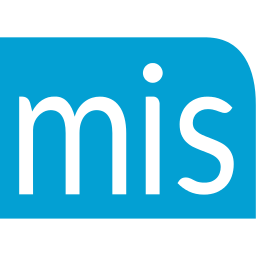(This article is by Guest Author: Gareth Goh, InsightSquared.com)
When faced with a bevy of objections – particularly from top-of-the-funnel prospects – sales reps might see their slim chances of closing this customer fading away. Sometimes, sales objection handling can feel like throwing up a Hail Mary, especially when the sales rep is unprepared, with no data at hand to counteract objections.
That’s where the “Feel, Felt, Found” methodology can help rescue some of these slipping-away prospects, especially with coupled with metrics and data during the last stage. Here’s how you should execute “Feel, Felt, Found,” with some metrics-driven sales objection handling during the “Found” phase to really pack a powerful punch.
Feel
Prospective Customer: I’m just not convinced that your product can solve my pain points.
Sales rep: I understand how you feel.
Saying this demonstrates empathy and shows that you heard what the prospective customer is saying and that you can relate. People want to be understood, especially when they are describing their pain points and skepticism. Saying this is a great way of disarming them, setting you up for the next step.
Felt
Sales rep: In fact, this customer I just worked with, Steve, felt the exact same way as you do.
Again, this not only demonstrates empathy, but also makes the prospective customer feel more comfortable in the knowledge that he or she is not the only one who has felt this way before. Their objection is, in fact, a common one. Your confidence in acknowledging so also suggests that you are comfortable dealing with this objection, and that the situation is fluid – in past instances where other customers have felt this way too, they soon changed their tone. Which takes us to the next step.
Found
Sales rep: I demonstrated X, Y and Z capabilities of our product to Steve and he soon found that the we could not only solve all the issues he was facing, but even made his life easier in these other areas.
The “found” part of this methodology is critical. For starters, referring to a specific customer provides social proof – if other people are finding success with it, this skeptic will be more convinced. Additionally, this alleviates the burden of selling from you – old customer Steve is now essentially doing most of the selling.
Where “found” really has potential to succeed, however, is when quantitative data is cited, with demonstrable proof in the proverbial pudding. Take us, for example. Let’s say we were talking to a hypothetical prospect looking to significantly increase their average deal size. They are highly skeptical that a sales analytics product like ours can help in that regard. But what if the sales rep follows up the “found” section by saying something like this:
Sales rep: I understand your need to increase your average deal size. A lot of people we talked to expressed this concern and weren’t sure that we could handle it. In fact, Steve Richard of Vorsight found that after starting with InsightSquared, their average deal size increased from $16k to $25k – a 56% increase!
And therein lies the power of data. Look at the difference that metrics-driven sales objection handling can deliver. Instead of making some vague general references to past customers who have found success with your product – “Trust me, lots of customers have increased their deal size tremendously after they started with us!” – talking about a specific customer, with quantifiable solutions to common pain points, will resonate much more loudly.
Of course, getting to metrics-driven sales objection handling during the “found” phase means having those metrics and data available to you in the first place. This requires a data-driven culture that is invested and interested in quantifying the success of their past customers. Metrics-driven sales objection handling is made even more feasible if you have a library of case studies to access. The quantifiable data of success, coupled with the social proof of other customers, makes metrics-driven sales objection handling as part of the ‘Feel, Felt, Found’ methodology an effective strategy.
How do your sales reps handle sales objections? Are metrics typically involved? Share your thoughts with me by emailing me – mike@mrinsidesales.com.
InsightSquared <http://www.insightsquared.com/> is the #1 Salesforce Analytics product for small- and mid-sized businesses (SMBs). Unlike legacy Business Intelligence platforms, InsightSquared can be deployed affordably in less than a day without any integration costs and comes preloaded with reports that real business people can use.
Learn more about Sales and Marketing Management Analytics on the InsightSquared blog <http://www.insightsquared.com/blog/>.
